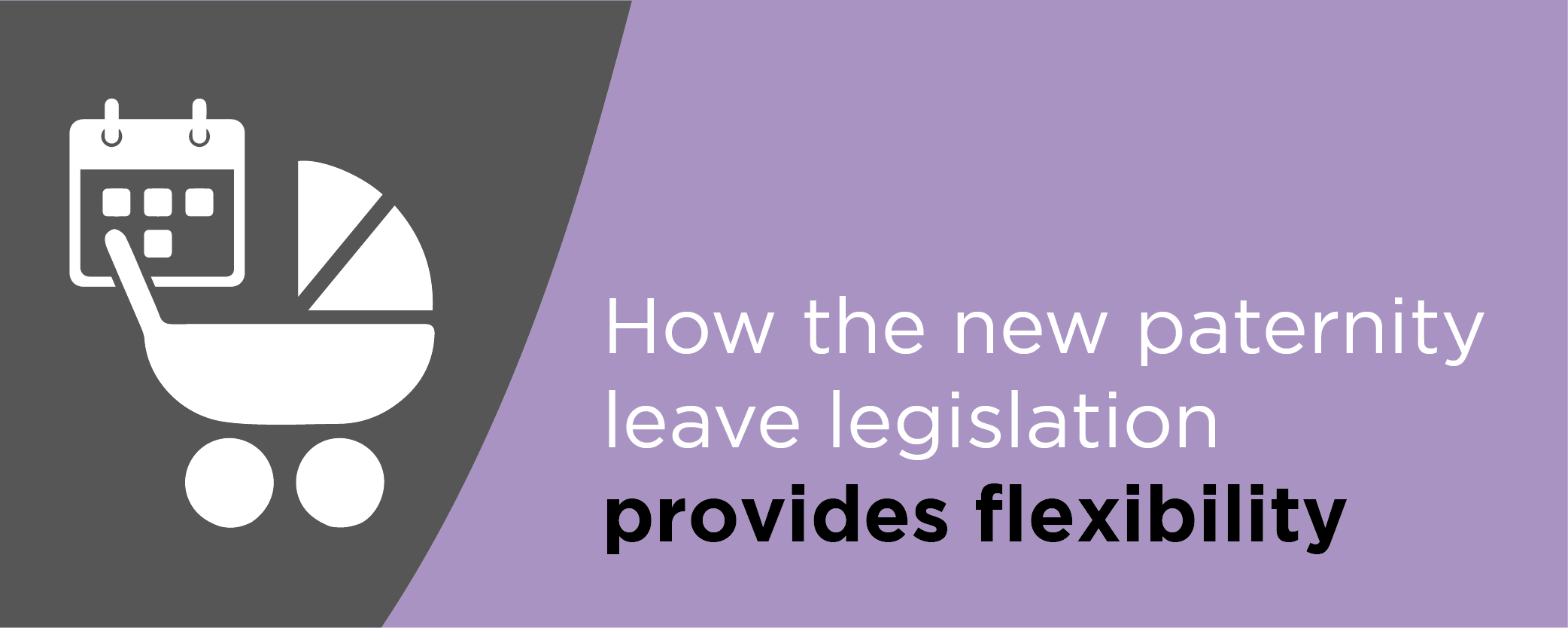- Basildon 01268244144
- Chelmsford 01245453800
- Colchester 01206217300
- London 020 4586 1280

The government has published draft legislation entitled the Paternity Leave (Amendment) Regulations 2024, designed to provide more flexibility. The regulations will apply in all cases where the Expected Week of Childbirth (EWC) is on or after 6 April 2024.
The key changes the regulations make are as follows:
employees will be able to take two separate one-week blocks (rather than previously having to take in one consecutive period).
employees will be able to take paternity leave at any time in the 52 weeks after birth or placement for adoption (rather than previously being only able to take this in the first 8 weeks).
employees will only need to give 4 weeks’ notice of their intention to take paternity leave (this is a reduction from the previous 15 weeks, which was required before the EWC
These proposed changes are, therefore, due to take effect at the same time as other family-friendly legal changes. The changes include
Additional protections for women who are pregnant or on maternity leave
Set to be introduced in April, the Maternity Leave, Adoption Leave and Shared Parental Leave (Amendment) Regulations 2024 shall extend redundancy protection to cover from pregnancy through to 18 months from the first day of the expected week of childbirth, or the date of the baby’s birth. Similar protections will apply for those on adoption leave or shared parental leave. This protection is first refusal on any suitable alternative employment. Whilst this does not mean that those covered by this additional protection can never be made redundant, more care shall be required.
Change to flexible working legislation
Changes to the flexible working regime will come into force in April, making the right to request a flexible arrangement a ‘day one’ right. The new Employment Relations (Flexible Working) Act also makes changes to the requirements for those submitting a request. Employers will be able to make two requests in each 12 months. The response time on employers will be reduced from 3 months to 2. Employers cannot refuse the request unless they have consulted with the employee. The employee no longer needs to explain the possible effect on the employer and how this would be dealt with. This is a change in favour of employees and increases the burden on employers.
The introduction of Carer’s Leave
The long-anticipated Carer’s Act shall also come into force in April. Employees will be able to apply for up to one week of unpaid Carer’s Leave in any 12 months if they have a dependant with a long-term care need and the leave is to provide or arrange care. This is a ‘day one’ right. An employer can request leave is postponed if it would unduly disrupt the business. They must do so before leave starts, explain why, and allow leave to be taken within a month of the requested start date. Employees are protected from resulting detriment and dismissal. Employers will need to consider how this will be recorded and whether a policy will be required.
If you have any questions or would like support in navigating the new paternity leave regulations or any other family-friendly legal changes or ensuring your business policies are up to date and compliant, please get in touch with the BLHR & Employment Team. We will be happy to discuss how we can help, including under our fixed fee BLHR service.



Comments